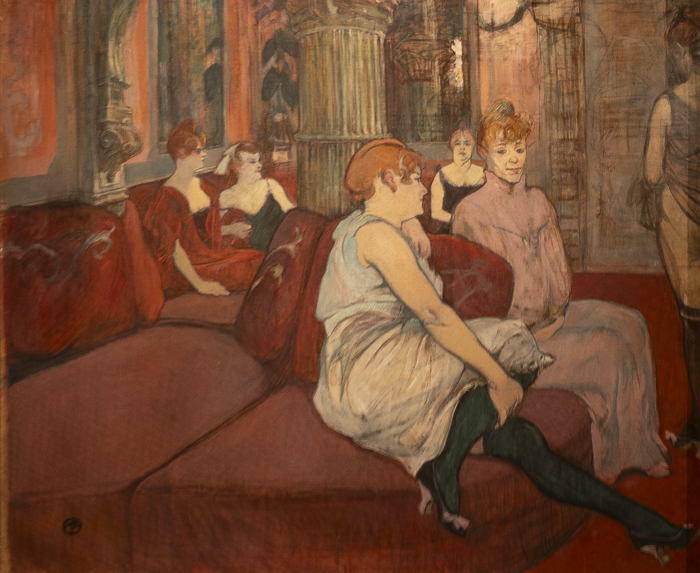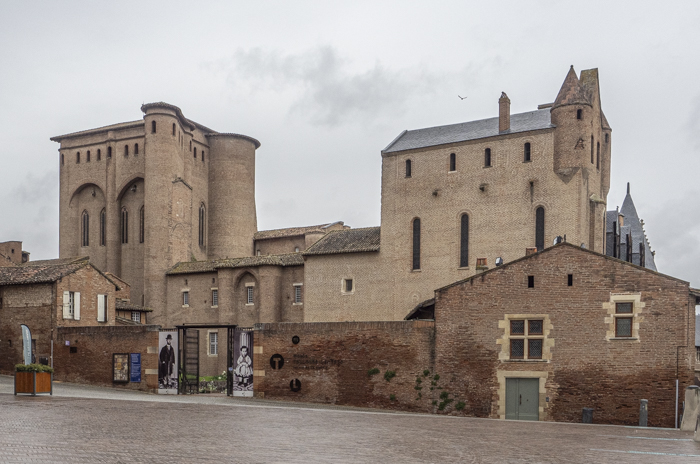Our drive from Carcassonne to Albi was almost entirely on side roads, which should have taken us over a small extension of the Massif Central, with magnificent dramatic views. Instead we had heavy rain, low clouds and had to negotiate steep declines on narrow wet roads. Traffic works and consequential diversions added to the fun. I even managed to knock a road sign as I negotiated a particularly narrow section of road.
We eventually found our Aire at Albi (43.9330, 2.1360) which is free for up to 72 hours and is really quite good quality.
The rain had eased to the very slightest mizzle and so we immediately struck out for the centre of Albi. My Rough Guide had substantially underplayed the charm of Albi. It mentions a huge Cathedral, in not very flattering terms and a Toulouse Lautrec gallery, but that was it.
Even driving into the city the Cathedral stood out but as we approached the centre it appeared enormous, which combined with the oversized old Bishop’s palace provided a spectacular view. Both of these buildings and much of the other large buildings are built in brick, which is a little unusual for a Cathedral, especially one of this size.
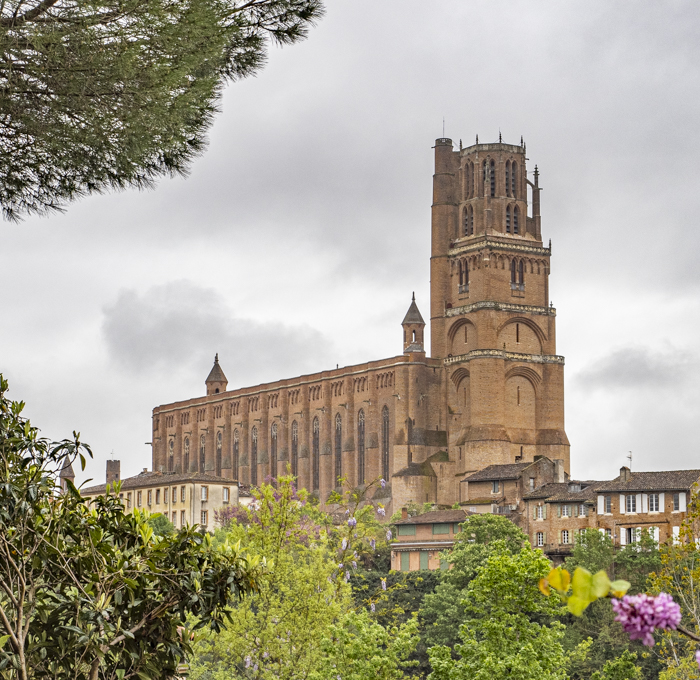
As mentioned yesterday the Albigensian Crusade against the Cathars earned its name from this city, even though it apparently was not a particular Cathar stronghold. The building of both the Cathedral and the Bishop’s Palace were undertaken following the upheaval of the Cathar Crusade, in the late 13th Century. The reason brick was used was firstly because there was not a good supply of local stone but there was plenty of clay and secondly because brick was quicker to build with and the Catholic Church, following the Cathar upheaval, were keen to erect the Cathedral as quickly as possible.
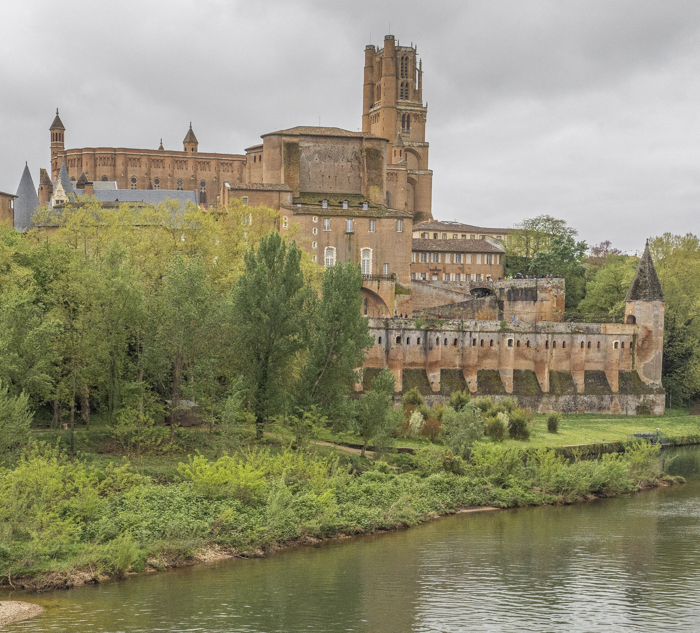
The whole of the City centre has a lovely ambiance, with the large brick built merchant’s houses dominate. I forgot to mention that Albi has the World Heritage seal of approval.
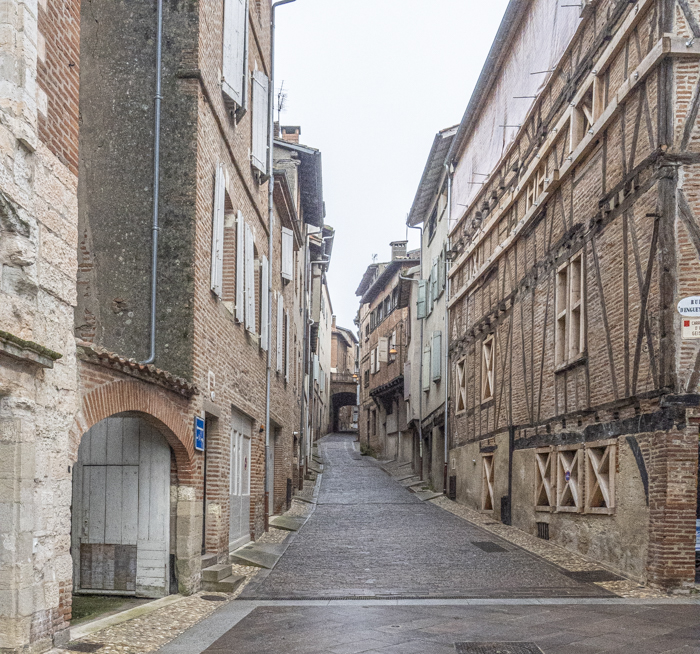
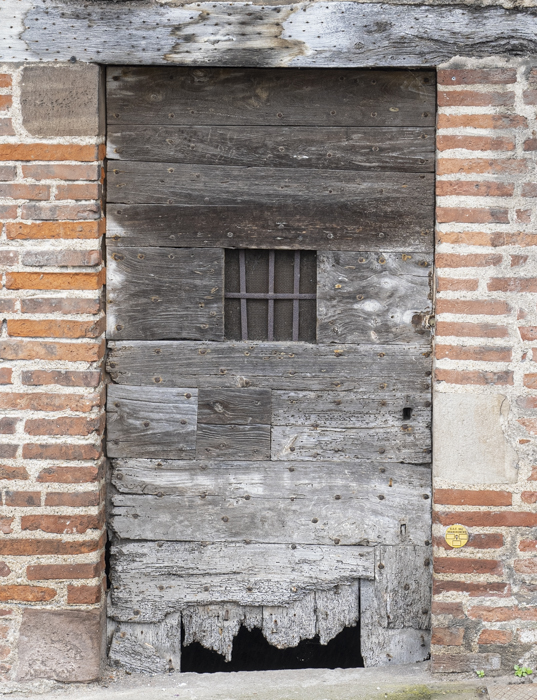
Inside the Cathedral is also unexpected. Every surface of the interior is covered in Renaissance frescoes. This is rather unusual. Having looked round hundreds of European Cathedrals generally if there are any surviving frescoes they are normally only small sections and often badly worn, not so Albi. In fact the Cathedral claims to be the biggest brick Cathedral in the world and also the largest fully painted Cathedral.
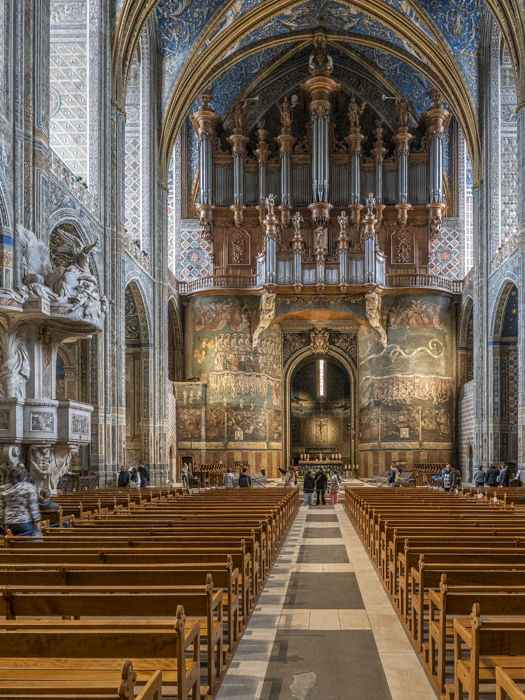
The trip to Albi ended with a tour of the Toulouse Lautrec gallery, which is housed in the impressive old Bishop’s Palace. Lautrec grew up in Albi, in an aristocratic family. The museum holds about 1000 of his works with only a small selection on display. The paintings were gifted by his family and so it is fascinating to see his development through paintings at the age of 14 right through to his better known work in Paris as part of the Post Impressionist movement. One disappointment is that Lautrec is best known for his bright posters produced for various Paris venues. Unfortunately, due to thin paper and the inks used the originals in the collection have lost much of what made them special. It is, nonetheless, a museum well worth visiting.
